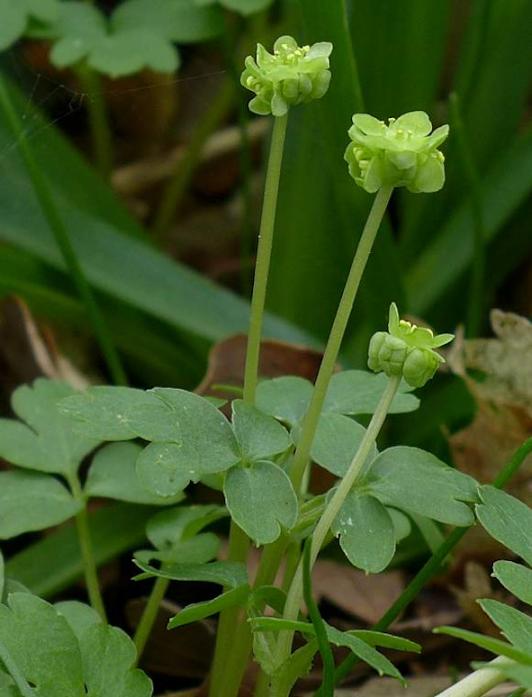
Town hall Clock Plant (Adoxa moschatellina) Moschatel
THIS is not an easy plant to find, as it is small and green and lives in the undergrowth in woods and hedgerows.
Back in the 1700s it was referred to as “inconspicuous and inglorious” and indeed the name Adoxa comes from the Greek, meaning humble.
It stands about four to five inches high, and spreads by long rhizomes (runners) which can cover large areas, forming a sort of mat.
The shape of the leaves lies somewhere between that of clover and flat-leaved parsley, and can be passed by until the plant flowers in early April. This gives it another name: Good Friday plant.
The plant produces a cube shaped inflorescence with a flower on each of the four faces, somewhat like a townhall clock. But it also has a fifth flower crowning it on the top – hence yet another nickname, the five-faced bishop. (It was said, during the war, that the fifth flower was for Spitfire pilots to know when it was teatime.)
These flowers are pale green, but decorated by the many yellow stamens. Clearly the name townhall clock plant is not steeped in antiquity so we look to another name, moschatel. This comes from the French, meaning musk, and indeed these little plants do emit a musk-like scent when dew falls in the evening.
Presumably this attracts the night flying moths and small insects that act as pollinators.
The fruit is a small, parchment-like berry containing a single seed.
Botanists don’t quite know where to place this plant, so it has been given its own family, the Adoxaceae, within which it is the sole species. (It may be related to the elders and the Weigelas.) Though found rather locally, it is widespread in the UK, and it is found throughout Europe up as far as the Arctic regions. It is also present in North America.
Although the plant has been known for its musky scent since the middle ages, sadly the herbalists seem to have found no use for it.
Though not easy to spot in Barnard Castle, it has been sighted in Flatts Woods in some years. And its unique flower arrangement mimicking a townhall clock does make it a rather special – and timely – addition to this series.
Dr Richard Warren is a botanist from Barnard Castle





